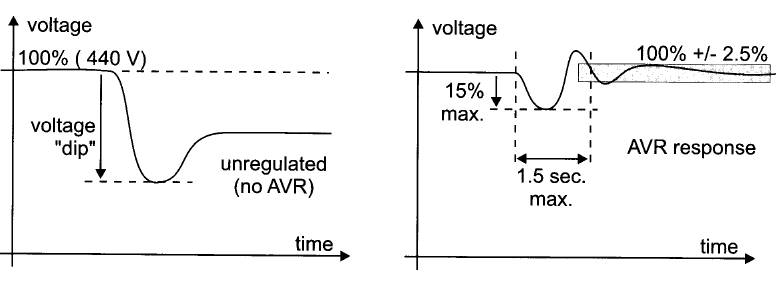Question
With reference to voltage variation
profiles caused by load changes imposed on alternating current generators:
(a)
Sketch a voltage dip, showing an acceptable recovery time;
(b)
Outline the salient factors that cause the variation in Q.
(c) Outline the salient factors of recovery from
the variation in Q.

Factors
causing variation.
Sudden load current surges (e.g.
due to motor starting) on a generator cause a corresponding change in its
output voltage. This is due to an internal voltage drop in the generator
windings and the effect is usually called voltage dip.
The size of the dip depends upon
Size of
load. Power factor of load [lag is bad]
Generator
internal reactance. [KVAr]
Factor of
recovery.
Recovery is by AVR.
An AVR will control the generator's
voltage to ±2.5% (or better) of its set value over the full load range. This is
its steady-state voltage regulation. Transient voltage dip is usually limited
to 15% for a specified sudden load change with recovery back to rated voltage
within 1.5 seconds. In special cases where unusually large surges are expected
(e.g. from heavy-duty cargo cranes) the generator/AVR performance limits may be
extended.
Recovery depends upon.
The
alternator. The excitation system. The AVR. The prime mover.